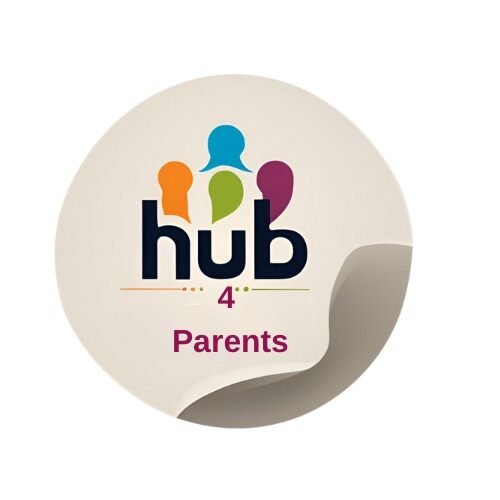

Introduction: The Importance of Parent-Teen Communication
Fostering strong communication between parents and their teenage children is essential for nurturing a healthy and trusting relationship. In today’s fast-paced world, modern families often grapple with busy schedules and the ever-present distractions of technology, making effective communication more challenging yet more important than ever.
Effective communication forms the foundation of understanding and trust within the family unit. It ensures that teenagers feel heard and respected, which significantly contributes to their emotional and social well-being. Parents, on the other hand, benefit by gaining insights into their teens’ thoughts, feelings, and experiences, helping them provide better support and guidance.
The significance of parent-teen communication extends beyond day-to-day conversations. It encompasses open dialogue about important issues such as academic pressures, mental health, peer relationships, and future aspirations. When parents and teens engage in meaningful discussions, they are better equipped to navigate the complexities and challenges of adolescence together.
Technological distractions, while offering benefits, can also create barriers to healthy communication. Social media, online gaming, and constant connectivity often lead to reduced face-to-face interactions, impeding the development of deeper family bonds. Therefore, it is crucial for parents to prioritize and cultivate an environment conducive to open and honest communication.
Busy schedules further compound these challenges. With parents balancing work, household responsibilities, and personal commitments, and teens juggling school, extracurricular activities, and social lives, finding quality time for meaningful conversations can be difficult. However, making a concerted effort to regularly connect, even in small ways, can make a significant difference in maintaining a strong parent-teen relationship.
Ultimately, the importance of parent-teen communication cannot be overstated. It is a key component of fostering mutual respect, understanding each other’s perspectives, and building a resilient family dynamic. By consciously addressing the challenges posed by modern life, parents can create a supportive environment that encourages open dialogue and strengthens the parent-teen bond.
Active Listening: The Foundation of Effective Communication
Active listening stands as the cornerstone of effective communication between parents and teens. This skill goes beyond merely hearing the words being spoken; it involves truly understanding the speaker’s message, including their thoughts, emotions, and concerns. In the context of parent-teen communication, active listening is crucial, as it fosters a sense of trust and mutual respect, enabling a deeper connection.
One of the practical approaches to active listening is reflective listening, which entails repeating or paraphrasing what the teenager has said. This technique demonstrates that the parent’s focus remains entirely on the teen’s words, thereby validating their feelings and experiences. For instance, if a teen expresses stress over exams by saying, “I feel overwhelmed with all the studying,” a reflective response could be, “It sounds like you’re feeling a lot of pressure from your studies.” Such responses affirm the teen’s experience and encourage them to share more openly.
In addition to verbal techniques, non-verbal cues play a substantial role in active listening. Maintaining eye contact, nodding, and using open body language all signal to the teenager that their words are important and that they are being attentively heard. These subtle but powerful gestures can often communicate more empathy and understanding than words alone.
Active listening also involves giving your undivided attention, which means setting aside distractions like smartphones and focusing solely on the conversation. It is essential to be patient and refrain from interrupting, allowing the teenager to express themselves fully before responding. This creates a safe space for them to articulate their thoughts and emotions without the fear of immediate judgment or dismissal.
Finally, it is crucial to approach these interactions with an open mind and a non-judgmental attitude. By reframing the dialogue from a judgment-free zone, parents can better understand their teen’s perspectives, fostering a more supportive and constructive relationship. Implementing these active listening strategies can significantly enhance communication, laying a strong foundation for understanding and connection.
Creating Open Dialogue
Fostering an environment where teens feel safe to express themselves is foundational to enhancing parent-teen communication. Initiating conversations with adolescents can often be challenging, but employing strategies such as starting with light, non-intrusive topics can set the stage for more substantive discussions. It is beneficial to choose the right moment, when both the parent and teen are relaxed and not preoccupied with other tasks.
One effective approach is asking open-ended questions that require more than a simple ‘yes’ or ‘no’ answer. For instance, instead of asking, “Did you have a good day at school?” try, “What was the most interesting part of your day?” Such questions encourage teens to share their thoughts and feelings, paving the way for deeper dialogue.
Maintaining a non-confrontational stance is crucial in these conversations. Teens are more likely to open up when they feel their opinions and experiences will be met with understanding rather than judgment. Using neutral language and conveying a genuine interest in their perspective can help achieve this. Rather than saying, “You should have done it differently,” try, “Can you walk me through what happened and how you felt about it?”
The role of empathy and validation cannot be overstated in creating a supportive dialogue. Showing empathy means actively listening to your teen and acknowledging their feelings without immediately offering solutions or dismissing their concerns. Phrases like, “It sounds like that was really tough for you,” or, “I understand why you felt that way,” can significantly reinforce their feeling of being heard and understood.
In essence, creating open dialogue with teens is about building trust and mutual respect. By initiating conversations thoughtfully, asking open-ended questions, maintaining a non-confrontational stance, and emphasizing empathy and validation, parents can create an environment where teens feel safe and encouraged to express themselves openly.
Setting Boundaries with Empathy
Establishing healthy boundaries is a critical aspect of enhancing parent-teen communication. As teenagers begin their journey towards adulthood, their need for independence often intensifies. It is essential for parents to recognize this developmental milestone while maintaining a structured environment that ensures safety and promotes responsible behavior.
One of the most effective ways to set boundaries is by being clear and consistent. Parents should articulate specific rules, explaining the rationale behind them to foster understanding and cooperation. For instance, if there’s a curfew in place, elucidate how it ensures their well-being rather than appearing as an arbitrary restriction. Consistency is key; hence, rules should be upheld uniformly to avoid confusion and ensure teenagers understand the consequences of their actions.
However, setting boundaries should not be a one-sided imposition. Involving teenagers in the discussion about rules and expectations can significantly enhance mutual respect and compliance. This negotiation process allows teens to voice their opinions and feel valued, turning boundary-setting into a collaborative effort rather than a dictatorial mandate. By engaging in open dialogues, parents can understand their teen’s perspective, making it easier to create boundaries that are realistic and acceptable for both parties.
Empathy plays a pivotal role in this process. Parents ought to listen actively and validate their teen’s feelings and viewpoints. Demonstrating empathy involves acknowledging their need for independence and showing trust in their judgment while still guiding them towards responsible decisions. Balancing empathy with authority can help parents maintain a connection with their teen, minimize resistance, and build a healthy, respectful relationship.
In summary, setting boundaries with empathy requires parents to be clear, consistent, and inclusive. By negotiating rules and demonstrating respect for their teenager’s growing autonomy, parents can create a nurturing environment that encourages independence while maintaining necessary boundaries for safety and well-being.
Managing Conflicts and Miscommunications
Conflicts and miscommunications are inevitable in any parent-teen relationship, but how they are managed can significantly impact the overall dynamic. Effective conflict resolution techniques can help create a more harmonious and understanding environment. One of the foremost strategies is to stay calm. Emotional escalation only amplifies the conflict, making it harder to reach a resolution. Taking deep breaths, counting to ten, or stepping away for a moment can help both parents and teens approach the situation with a clearer mind.
Addressing issues promptly is another key strategy. Allowing conflicts to fester can lead to resentment and further misunderstandings. By discussing issues as they arise, families can prevent small misunderstandings from growing into larger problems. It is important to approach these conversations with an open mind, ready to listen and understand each other’s perspectives. This can help avoid dismissing valid concerns and instead focus on the issues at hand.
Seeking win-win solutions is essential in managing conflicts constructively. This involves finding resolutions that meet the needs of both parents and teens, rather than one side imposing their will on the other. Collaborative problem-solving fosters mutual respect and strengthens the relationship. It involves open communication, where both parties express their feelings and needs, and work together to find a compromise.
Staying solution-focused rather than dwelling on past mistakes is crucial. Revisiting old arguments or grievances can undermine the progress of finding a resolution. Concentrating on how to solve the current issue promotes a forward-thinking mindset and empowers both parents and teens to work together. Using “I” statements rather than “you” statements can also be beneficial, as these communicate personal feelings without placing blame.
Ultimately, managing conflicts and miscommunications requires patience, empathy, and a commitment to understanding each other. These strategies can pave the way for healthier and more effective parent-teen communication, fostering a more supportive and harmonious family environment.
The Role of Technology in Communication
In the contemporary landscape, technology plays a pivotal role in shaping how we interact, and this is especially true for parent-teen communication. The advent of smartphones, social media, and various communication platforms presents both opportunities and challenges for family dynamics. On one hand, technology can serve as a bridge, offering numerous avenues for parents and teens to stay connected. Applications such as family calendars, messaging apps, and shared task managers can facilitate seamless communication and enhance coordinated efforts within the household.
However, the ubiquity of technology can also hinder meaningful interactions if not managed effectively. Excessive screen time can lead to isolation, and a dependency on digital communication often detracts from the value of face-to-face conversations. Striking a balance is crucial. Parents should model healthy behaviors by setting realistic boundaries on technology use, such as designating tech-free zones or times, like during dinner or family outings. This ensures that technology remains a tool for enhancing, rather than obstructing, personal connections.
Another approach to leveraging technology positively is through shared experiences. Engaging in activities such as watching movies, playing video games, or even learning a new hobby together online can foster a sense of unity and provide common ground. Additionally, family communication platforms enable the sharing of important information and updates in real-time, reducing the potential for misunderstandings and keeping everyone on the same page.
Moreover, it’s imperative to have open dialogues about the appropriate use of technology. Discussing online safety, the importance of digital etiquette, and the potential consequences of oversharing can empower teens to make informed decisions. By cultivating a balanced approach, technology can significantly enhance parent-teen communication, ensuring it serves as a tool for connection rather than a barrier.
Building Trust and Mutual Respect
Establishing a foundation of trust and mutual respect between parents and teens is pivotal for effective communication. One of the foremost steps in this process is consistency. When parents maintain consistent rules and expectations, teens are more likely to understand and adhere to boundaries, fostering an environment of reliability and predictability. This consistency reflects a stable and secure household, encouraging teens to reciprocate trust.
Honesty plays an equally critical role in building trust. When parents are forthright about their thoughts, feelings, and decisions, it champions an atmosphere where honesty is valued and reciprocated. This openness helps teens feel more secure in sharing their own experiences and challenges, paving the way for sincere and productive dialogues. To reinforce this, parents can adopt an active listening approach, showing genuine interest in their teen’s daily activities, thoughts, and emotions. This not only validates the teen’s experiences but also solidifies the relationship.
Moreover, parents should strive to be role models of the behaviors they wish to see in their teens. Demonstrating positive actions, such as empathy, integrity, and responsibility, provides a blueprint for teens to emulate. A parent’s ability to showcase these traits in real-world scenarios speaks volumes, far surpassing the impact of verbal instructions alone. Furthermore, when teens witness their parents managing conflicts constructively, displaying understanding, and offering support even in tough times, they are more inclined to internalize these behaviors.
In summary, building trust and mutual respect requires a concerted effort of consistent behavior, honest communication, and active engagement in a teen’s life. By embodying the qualities that lay the groundwork for a respectful and trustworthy relationship, parents can nurture a communicative and harmonious connection with their teens.
Conclusion: Embracing the Journey of Parenting Adolescents
Parenting adolescents is a dynamic journey filled with unique challenges and profound rewards. By enhancing parent-teen communication, parents can foster a stronger, more supportive relationship with their teenagers. Throughout this blog post, we have discussed various expert tips and strategies, including active listening, setting clear boundaries, and being consistent with your approach. These methodologies aim to bridge the communication gap and build mutual respect and understanding.
Improving communication with your teen has numerous benefits, such as promoting emotional well-being, enhancing problem-solving skills, and preparing them for future adult relationships. As parents, viewing the adolescent years as an opportunity for growth and connection is pivotal. It allows you to guide your teen through this transformative phase with empathy and patience.
Continuous refinement of communication skills is essential in supporting your teen’s development. Whether it’s through regular family meetings, open dialogue, or simply spending quality time together, these efforts can lead to a healthier family dynamic. Embrace this journey with an open mind, and remember that your dedication to improving communication will pave the way for a resilient and connected family unit.
RELATED POSTS
View all



